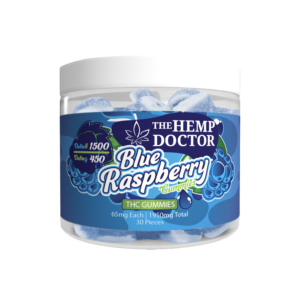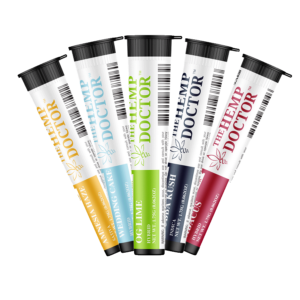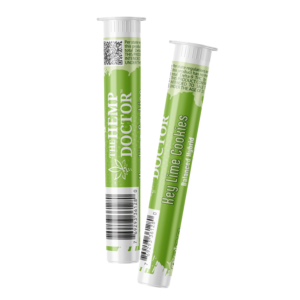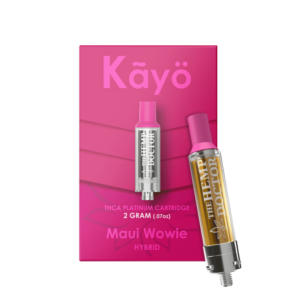Trimming cannabis might sound like a menial task, but it’s an integral part of the cultivation process. The way you trim your buds affects everything from potency and aroma to how smooth it smokes. If you’re just beginning to cultivate cannabis or need a refresher on how to trim weed expertly, this is the guide you’ve been waiting for.
Learn the step-by-step process of trimming cannabis in detail, know the differences between wet and dry trimming, and expert tips you need to know growers swear by.
Wet Versus Dry Trimming: When is The Perfect Time to Trim Cannabis?
Cannabis trimming is divided into two methods: wet and dry trimming. Both methods have their pros and cons, but ultimately, it’s your decision to choose one over the other. To make a confident decision, familiarize yourself with the basics of both trimming methods.
Wet Trimming
Wet trimming involves cutting harvested cannabis while the plant is still wet and fresh, prior to drying. As soon as you chop down the branch of the cannabis plant, begin trimming within a few hours or right away.
Pros:
- Easier to trim because leaves are stiff and stand out
- Reduces drying time
- Less risk of mold during drying
- Wet trimming puffs up the bud, making it more attractive.
- Trichomes remain intact, preserving the terpenes (flavor) of the final bud product.
Cons:
- Can be messier due to sticky resin
- Trichomes are more delicate and may fall off
- Reduces the quality of buds as removing sugar and fan leaves causes the buds to dry up more quickly.
- Forces a shorter drying time, which means there’s a significant retention of chlorophyll, which adds to the earthy flavor of buds.
Dry Trimming
With this method, you hang the whole plant (or branches) to dry for 7–14 days and then trim the dried buds. You’ll know it’s time to cut when the outside of the buds feel dry and crips and the small stems begin to snap instead of bend. For a more technical approach, if your buds have dropped to around 10% to 15% moisture, it’s time for dry trimming.
Pros:
- Preserves more trichomes, resulting in higher-quality buds.
- Provides a smoother smoke because of the lower chlorophyll content
- Easier to control the drying environment and drying speed.
- Less mess because dried buds are less sticky
Cons:
- Leaves curl around the buds and can be harder to trim
- Dry trimming is a more time-consuming process.
- Increased risk of mold growth, especially in humid climates
- You need a lot of space to hang the plants.
So, which is better?
Now that you are aware of the pros and cons of both trimming methods, you’ve probably realized that choosing a trimming style depends on your space, time, and goals.
Wet trimming is easier, faster, and requires less space, which is why it’s probably better suited for beginners. On the contrary, dry trimming is more challenging and requires a larger workspace. Experienced trimmers are likely to choose this style of trimming.
How to Trim Cannabis Buds: Step By Step
Tools Needed:
- Trimming scissors (curved-tip work best)
- Latex or nitrile gloves
- Clean tray or surface for collecting buds
- Rubbing alcohol and a rag (for cleaning sticky scissors)
- Optional: a trim bin or a magnifying glass
Step 1: Set Up Your Trimming Area
Find a clean, well-lit space with good airflow. If possible, play some music or podcasts, you might be here a while. Line your workspace with a tray or paper to catch fallen trichomes.
Step 2: Remove Fan Leaves
Wear your latex or nitrile gloves and start by cutting off the large fan leaves. These don’t contain many trichomes and are easy to identify. They’re the big leaves with little to no resin.
Step 3: Snip the Sugar Leaves
Next, focus on the sugar leaves, those small, resin-coated leaves sticking out from the buds. Trim them close to the bud surface without cutting into the flower. These are the leaves that affect the smoothness of your buds when smoked.
Step 4: Shape the Buds
Once the sugar leaves are removed, give the bud a final shape. Make sure it looks tight and rounded (like what you’d see in a dispensary jar). This step is cosmetic, but it significantly enhances the product’s appearance.
Step 5: Collect the Trim
Save your trimmings! Sugar leaves and resin-rich pieces can be used later to make edibles, hash, or concentrates.
Step 6: Clean Your Tools
Resin builds up quickly on your scissors. Keep a cloth soaked in alcohol nearby and wipe them clean regularly to maintain precision.
What Are the Best Pruning Methods for Cannabis?
Pruning pot plants is different from trimming. If trimming is done after harvest, pruning is done during the cannabis plant’s growing stage to encourage a better yield. Below are some of the most common pruning cannabis techniques:
Topping
Topping involves cutting the main stem to create two colas instead of one. This promotes lateral branch growth and makes the plant bushier with multiple colas. With topping, you use a pair of clean pruning shears and cut off the top of the main stem, just above the set of nodes.
Topping is carried out during the vegetative stage, when the plant has developed several sets of leaves already.
Defoliation
Defoliation is the strategic removal of leaves during flowering to boost airflow and light penetration. It is done by removing selected large fan leaves that block the light from reaching the lower branches.
The best time to apply defoliation is during the vegetative stage and the early flowering stage, but avoid excessive defoliation in the flowering stage as it stresses the cannabis plant.
FIMing
FIMing is similar to topping, but instead of cutting off the entire top, you pinch it or snip off the new growth at the tip. This results in multiple new growth tips. It stimulates branching and the development of colas.
FIMing is practiced during the vegetative stage and can be repeated to encourage bushier cannabis plants.
LST (Low-Stress Training)
LST, or Low-Stress Training, involves bending the branches of the cannabis plant to adjust it into a horizontal canopy. This pruning technique promotes even light distribution and bud development.
How LST is done is by gently bending the main branches of the cannabis plant outward. Secure them with plant training clips. LST is best done during the plant’s vegetative stage when the branches are still flexible.
Why Do Growers Trim Their Cannabis?
Growers make it a point to trim their cannabis for several reasons.
1. Aesthetic Appeal
Trimmed buds just look better and have that “top shelf” appearance, which many regard as a sign of quality. Trimmed buds have a clean, uniform shape that buyers and many dispensaries look for.
2. Enhanced Aroma
Buds trimmed before being stored in jars tend to evoke a more pleasant smell compared to untrimmed buds, which can have a stronger, more “planty” smell because of all the excess leaves. That’s because trimming reduces the chlorophyll-heavy scent of extra leaves, and the terpenes shine through.
3. Smoother Smoking Experience
Untrimmed cannabis leaves provide a harsher smoking experience because of the extra cannabis leaves. These sugar leaves hold a lot of chlorophyll and burn less evenly. Counter that harsh hit by trimming the extra leaf matter.
4. Higher Potency (Perceived and Actual)
While trimming doesn’t automatically increase THC levels, it can enhance the perceived and actual potency of each bud. Removing sugar leaves results in a higher concentration of cannabinoids and terpenes per gram. This leads to stronger, more flavorful hits and improved yield-to-effect ratios.
5. Better Storage and Curing
Trimming helps buds to dry and cure more evenly because excess leaves trap moisture, which increases the risk of mold growth during the curing process.
Conclusion
Trimming cannabis is both an art and a science. Whether you prefer wet or dry trimming, taking the time to manicure your buds properly will pay off in flavor, potency, and smoothness. Remember: invest in good tools, stay patient, and treat your harvest like it deserves.
Once you master trimming, the next step is what to do with those leftover trimmings. From cannabutter to bubble hash, the possibilities are endless.







